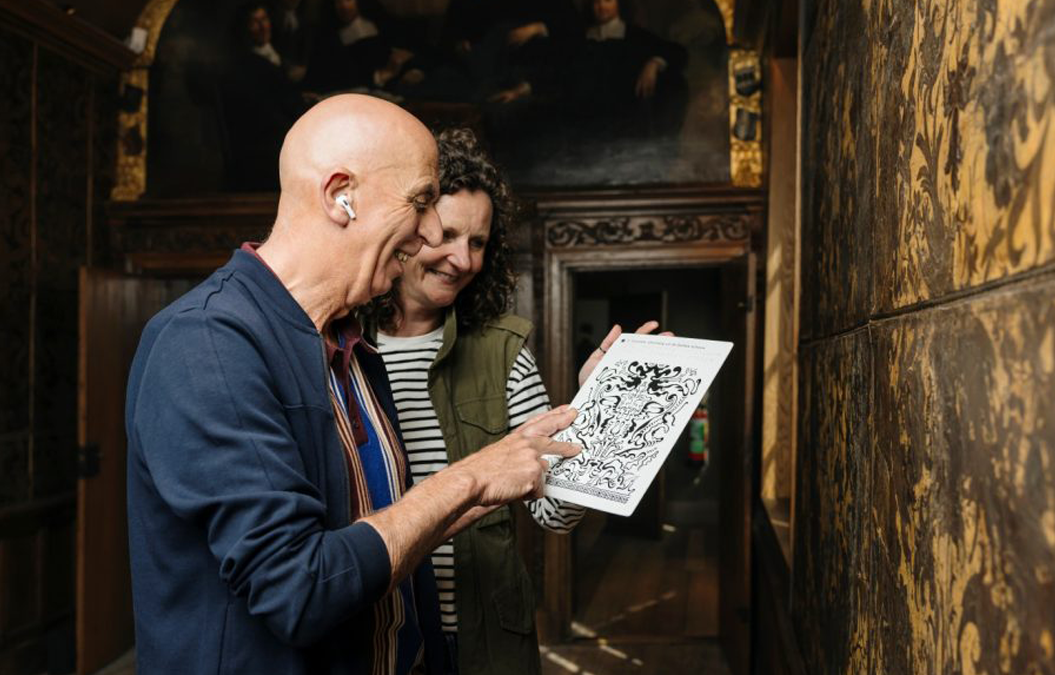You may have seen these little signs in elevators, on medicine boxes, in a museum or on a menu. You probably already know that they are designed for blind people, but do you know how they work? This article will tell you more about it!
Braille is a tactile (tactile) reading and writing system with raised dots, which has been used by blind people to read and write since 1829, thus allowing access to education as for anyone else.
The Braille alphabet is an important tool for blind people to learn and integrate into society. Although the Braille alphabet has improved since 1829, it is still the basis of reading for the blind and partially sighted.
Let’s go back in time to discover how Braille originated and how it can be used every day! The sense of touch of blind and partially sighted people can be used to teach them to read. The idea of touching raised letters through a system named after the Italian Jesuit Francesco Lana de Terzi, who proposed it in 1670, became a basis for further developments. This writing system was used by the Royal Institute for Blind Children.
The typing policy was designed so officers could write and send messages in the dark. This system, called “night writing”, is based on sound and consists of raised dots on a grid. Charles Barbier completed this system in 1819 and presented it to the Royal Institute for Blind Children.
However, it was limited in that it only considered the pronunciation of a word, not its spelling. When Barbier did not accept his comments, Louis Braille decided to develop the system himself and later created a method that is still used today and named after him: Braille.
However, Braille is not just a simple language system. It breaks language into numbered dots that are easy to read by touch. Each character is organized into a cell of dots, divided into two columns of three dots each. This makes it possible to form a multitude of letters, numbers and symbols. Therefore, there are variations such as Japanese, Korean and Cyrillic braille, which are different from French braille.
Programming and coding within Braille has also evolved, influencing other domains such as mathematics and music, and offering blind and partially sighted people the opportunity to develop skills and/or hobbies. However, converting real mathematical formulas to Braille takes a lot of time and makes them difficult to understand.
As Braille adapted to information technology, the alphabet was expanded with two additional dots, allowing 256 combinations with this 8-point encoding, and all the new symbols of the digital age to be represented on a single character.
Today, blind people can easily access the Internet and connect with the world like other Internet users. Technology has developed to support them. It’s not just smartphones that have brought real change.
Thanks to these technological developments, blind and partially sighted people can:
● Read information on the Internet using braille transcription software. Letters are automatically written in braille and can be printed with a special printer, the braille printing machine.
● Using a new vision device for the blind (or braille terminal) with a built-in braille keyboard. Dots can be moved up or down to display characters. The text on the screen can be directly translated to a renewable Braille display. Scanner software converts the text on the screen to a Braille page or reads the text aloud.
Wij zijn de CBB, een organisatie die zich met hart en ziel inzet voor blinden en slechtzienden. Ons doel is om het leven van deze doelgroep toegankelijk te maken, zodat iedereen kan deelnemen aan de maatschappij en de kerk, zelfs met een leesbeperking. We bieden een breed scala aan diensten en producten, waaronder christelijke boeken in braille en grootletter, en lectuur in gesproken vorm. Ook leveren we maatwerk producten aan bedrijven, zoals visitekaartjes met voelbare logo’s, menukaarten in braille, voelbare bewegwijzeringsbordjes en voelbare kunst, zowel nationaal als internationaal.
Bij ons is veel mogelijk. Ons team van specialisten staat klaar om u te helpen met oplossingen die aan uw behoeften voldoen. Wilt u meer weten over hoe wij u kunnen ondersteunen of wilt u voorbeelden van ons werk zien? Neem geheel vrijblijvend contact met ons op om te ontdekken wat er mogelijk is of ontvang onze portfolio: Portfolio Aanvragen.
